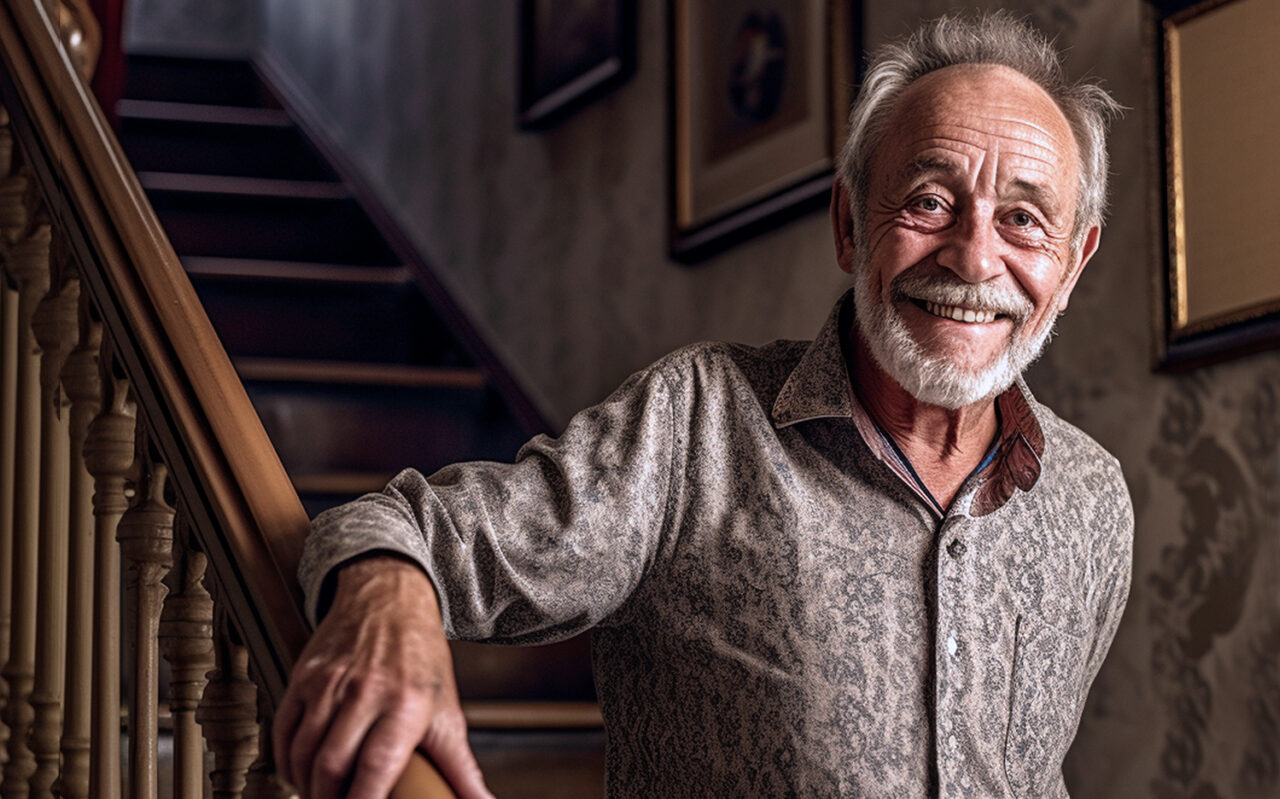We asked Physical Therapist Barbara Kruschwitz for some advice about climbing stairs. Here’s what she had to say.
“Patients and residents often tell me how climbing stairs is ‘good exercise.’ The truth is, stairs aren’t ‘good exercise.’ For even the fit and healthy, stairs challenge the cardiovascular system, weight-bearing joints, and your righting reactions and balance.
But we have stairs in our homes. Our colonial-style homes have beds and bathrooms upstairs and a laundry room in the basement. Vintage apartment buildings have multi-level walk-ups –and don’t ask me why so many modern condos have those narrow circular helixes (spiral staircases)!
I have some suggestions to help make things safer. To help you remember, they spell CRISP!
C-Clear – Keep stairs clear! This includes not using steps as storage surfaces and removing snow and ice on steps outside. (Wearing proper non-slip footwear adds safety, so maybe think ‘Cleats’ as well.)
R-Railings – Always hold the railing. Even light contact, sliding a hand along, improves stability. Limit what you carry to keep a free hand. Find a single-handed laundry basket. Have the bagger pack light grocery bags, use reusable totes with handles for one-handed carries, and never hold your cell phone while climbing.
I-Illuminate – No matter how well you know your way, be sure you can see your stairs. Bifocals and reading glasses impair depth perception while looking down, so you may need to remove your glasses.
S-Slow – Except for the worst emergencies, there is nothing so important that you need to run on the stairs, because that risks falling. Think about taking a rest between trips from the car when unloading groceries — just be sure to get the ice cream in first! With laundry, try washing in the morning and drying in the afternoon. Pacing yourself is always good!
P-Plan – If you ‘have’ to go up and down stairs during your day, limit the number of times you climb. Get fully washed and dressed before you come downstairs for the day. Maybe ask a visitor or family member to get something for you to spare you a trip. Make a first floor room a bedroom if possible. Finally, consider moving to a home without stairs when making long-term moves.
My Gramma lived on the second floor of her two-family home for 70 years and swore the stairway grew longer as she grew older. I know it took longer because I heard when she’d stop on the landing to rest and then ask me to bring up the potatoes and milk from the car. It worked!
CRISP can remind us all that being stair savvy can help keep us safe, save physical wear and tear, and prolong our independent living.”
 Barbara Kruschwitz, PT, DPT works in the physical therapy department at Whittier Rehabilitation Hospital Bradford. Barbara has almost five decades of experience and loves to help patients recover. She has worked in nationally and internationally-recognized facilities, taught clinically and in universities, worked in home care and ICUs and enjoys one-on-one hands-on clinical work – like our TCU – the best. She says: “Loss of mobility impairs life quality. Knowledge and encouragement can make a huge difference. That is why I come to work – I can help with both.”
Barbara Kruschwitz, PT, DPT works in the physical therapy department at Whittier Rehabilitation Hospital Bradford. Barbara has almost five decades of experience and loves to help patients recover. She has worked in nationally and internationally-recognized facilities, taught clinically and in universities, worked in home care and ICUs and enjoys one-on-one hands-on clinical work – like our TCU – the best. She says: “Loss of mobility impairs life quality. Knowledge and encouragement can make a huge difference. That is why I come to work – I can help with both.”




